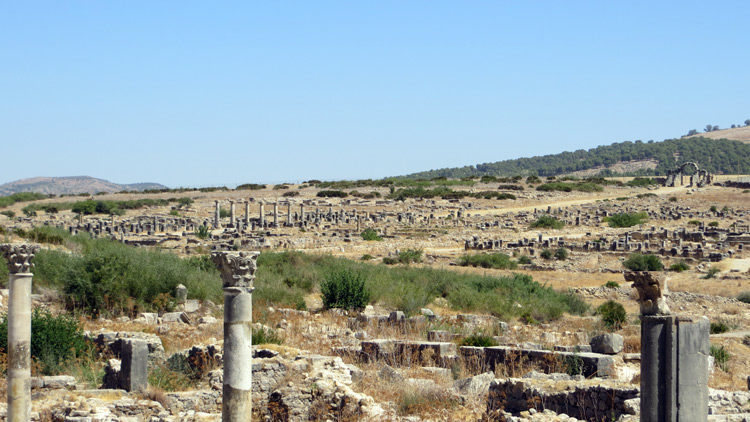As such, having been invited to visit by a young woman native to Meknes (whom I had met at the Merzouga sand dunes), a visit to Volubilis is compulsory as it is roughly 30 km away. Getting to the site was no trivial task as Meknes is not the most tourist friendly city in terms of transport facility. After wasting half the morning wandering around this bustling city sorting out contradictory transport information — and trying my best to negotiate assistance in broken French and Spanish — I recoursed to hiring a taxi to and from. This is contrary to my preferred mode of exploration as it necessarily precludes direct interaction with the local public.

Admittedly, I have an unusual fascination with ruins; but, particularly predisposed to the grandeur of architectural/archeological ruins. Majestic ruins always evokes a feeling of awe, wonder, sense of timelessness, and yet, concomitantly, ever a present reminder of the pressing impermanence of all things. Ancient Volubilis is no different. This sprawling ruin of a former municipium had once been part of an independent Mauritanian kingdom of various indigenous Berber tribes before the Romans marched in and staked it as their western-most frontier.
What was known as Walili to the locals became Latinized as Volubilis, replete with triumphal arches, Roman roads, basilica and all. Much has change in the sweep of two thousand years, and yet the remnants of this Roman colonial town outpost still remains scatter across a vast sloping field overlooking the dried out pastoral planes of summer. Having occupied the region for roughly two and a half centuries (40-270 CE), the Romans eventually retreated back east, unable to fend off constant pressure from the Berbers trying to reclaim their land.
When the Arabs arrived in the latter 8th century to herald the beginning of Islamic North Africa, the Romans had been gone 500 years , yet Volubilis remained inhabited; with the locals speaking still a dialect of Latin. Indeed, at its peak evidence suggest that many different ethnic groups lived side by side here. In fact, Morocco’s varied history is readily reflected in the faces of the population today; the population is discernable as a motley history of who conquered whom on the faces of those one meets.

Volubilis was finally abandoned probably sometime in the latter 18th century. Perhaps the great Lisbon quake of 1755 contributed to it’s final destruction as much of the structures and masonry were demolished to build the palaces of Moulay Ismail in Meknes. Had it not been for this plundering, Volubilis would survive today as one of the best Roman ruins anywhere. As it remains, it is but a mere semblance, a faded semblance of an once-glorious city.
It’s wondrous to walk pass the columns, roads, and inlaid mosaics still… all echoing footsteps of the pass trodden by succeeding civilizations that have supplanted each other. Time hastens the passing centuries and firmaments roll; one conquering civilization displaces another in due time. This is the course of human history as laid out in stone on the vast plane stretching beneath Jbel Zerhoun mountain.

